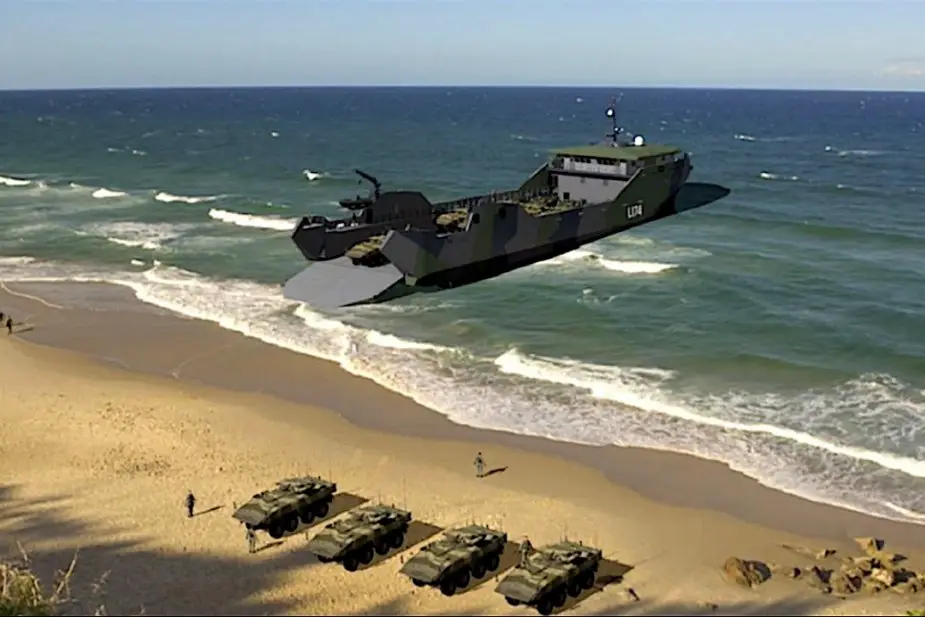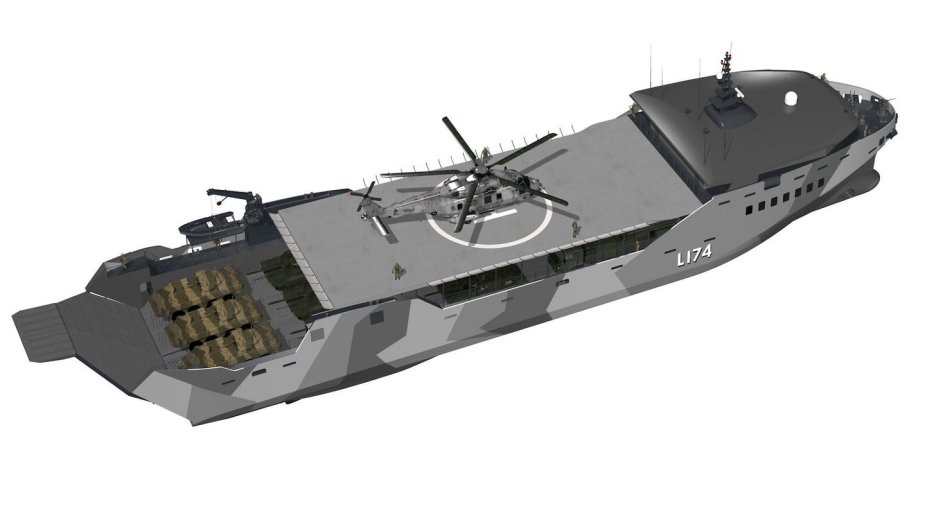Analysis: US Navy makes progress concerning Light Amphibious Warship (LAW) Program
According to the report by Ronald O’Rourke, a long-time naval analyst for the Congressional Research Service, the US Navy’s new Light Amphibious Warship (LAW) program envisions procuring a class of 28 to 30 new amphibious ships to support the Marine Corps, particularly in implementing a new Marine Corps operational concept called Expeditionary Advanced Base Operations (EABO).
Follow Navy Recognition on Google News at this link
 Rendering of Light Amphibious Ship. (Picture source: Sea Transport Solutions)
Rendering of Light Amphibious Ship. (Picture source: Sea Transport Solutions)
The EABO concept was developed with an eye toward potential conflict scenarios with China in the Western Pacific. Under the concept, the Marine Corps envisions, among other things, having reinforced platoon-sized Marine Corps units maneuver around the theater, moving from island to island, to fire anti-ship cruise missiles (ASCMs) and perform other missions so as to contribute, alongside Navy and other U.S. military forces, to U.S. operations to counter and deny sea control to Chinese forces.
The LAW ships would be instrumental to these operations, with LAWs embarking, transporting, landing, and subsequently reembarking these small Marine Corps units. As conceived by the Navy and Marine Corps, LAWs would be much smaller and individually much less expensive to procure and operate than the Navy’s current amphibious ships.
The Navy wants LAWs to be 200 to 400 feet in length, and to have a unit procurement cost to be “several digit millions, not triple-digit millions,” a phrase that might be interpreted to mean a unit procurement cost of less than $100 million, or perhaps one that is closer to $100 million than to several hundred million dollars.
 Rendering of Light Amphibious Ship. (Picture source: Sea Transport Solutions)
Rendering of Light Amphibious Ship. (Picture source: Sea Transport Solutions)
The Navy is still in an information-gathering phase but does already have some key requirements for any potential LAW design, which it expects to be about 200 feet long overall and have 8,000 square feet of cargo space in total. Each LAW will have a crew of no more than 40 sailors and be able to accommodate at least 75 Marines.
The LAW as outlined by the Navy is small enough that it could be built by any of several U.S. shipyards. The Navy states that in response to an initial request for information (RFI) about the LAW, it received responses from 13 firms, including nine shipyards.
The Navy envisions procuring the ships on an expedited schedule, with the first LAWs potentially being procured in FY2023 and a total of 28 notionally being procured by FY2026.
The Navy’s current amphibious-ship force consists entirely of large amphibious ships, including the so-called “big-deck” amphibious assault ships, designated LHA and LHD, which look like medium-sized aircraft carriers, and the smaller (but still quite sizeable) amphibious ships, designated LPD or LSD, which are sometimes called “small-deck” amphibious ships.


























